Google Search Console performance reports contain all the queries that your page is ranking for in Google. It’s also an incredibly powerful keyword research tool. Yes, that’s right, you can use Google Search Console for keyword research! On top of that, you can use the data provided within GSC to optimise existing articles, allowing them to rank better and bring in more organic traffic to your website.
This is first-party data, straight from the search engine, and can offer up a lot of ways to optimize and extend your existing articles to rank higher and for a wider breadth of keywords.
Finding queries that your page ranks for, but are not currently included on the page, gives you a number of opportunities:
1, Including them within the existing text.
2, Create new sections within the existing article.
3, Create a new page around the query and internally link to establish a topic cluster.
This article makes up part of our Google Search Console tutorials and training section, make sure to check the others out.
How to see the queries your page ranks for in Google
1, Log into Search Console
Log into Google Search Console and select the site property the page you want to improve belongs to.
2, Performance Results
Within the Performance Results section click on the Search results link.
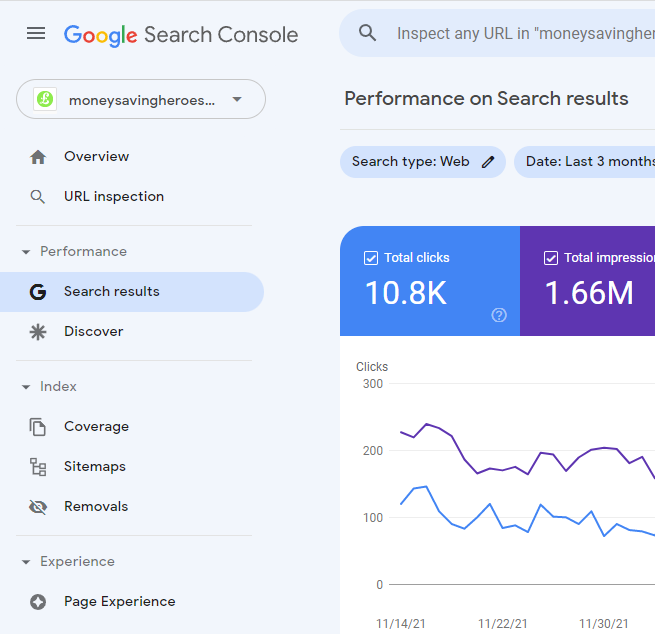
If you don’t have any ‘Discover’ traffic to report on, you won’t see Search results and Discover, there will just be the Performance link to click on.
3, Filter by Page
When you first click into the Search Results report you are looking at the clicks, impressions for the whole site.
The filters are listed at the top of the graph, and by default will be Search Type:Web and Date:Last 3 months.

Click the + button and add a new Page filter.
Within the filter settings, set the filter type to be Exact, and below enter the exact url you are looking to optimize.
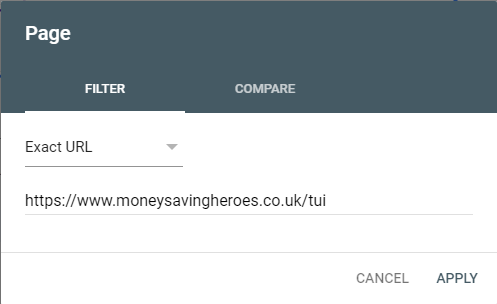
Once you click on Apply, the data in the search results report will be filtered by this URL.
4, Extend the timeframe
3 months worth of data is useful, especially for high traffic sites. But 12 or 16 months of data will probably be more useful to everyone.
Click the Date:Last 3 months filter, and extend the time period to the last 12 or 16 months.
5, View all the queries possible
Scroll down and below the graph you’ll see all the queries the page has appeared in the search results for.
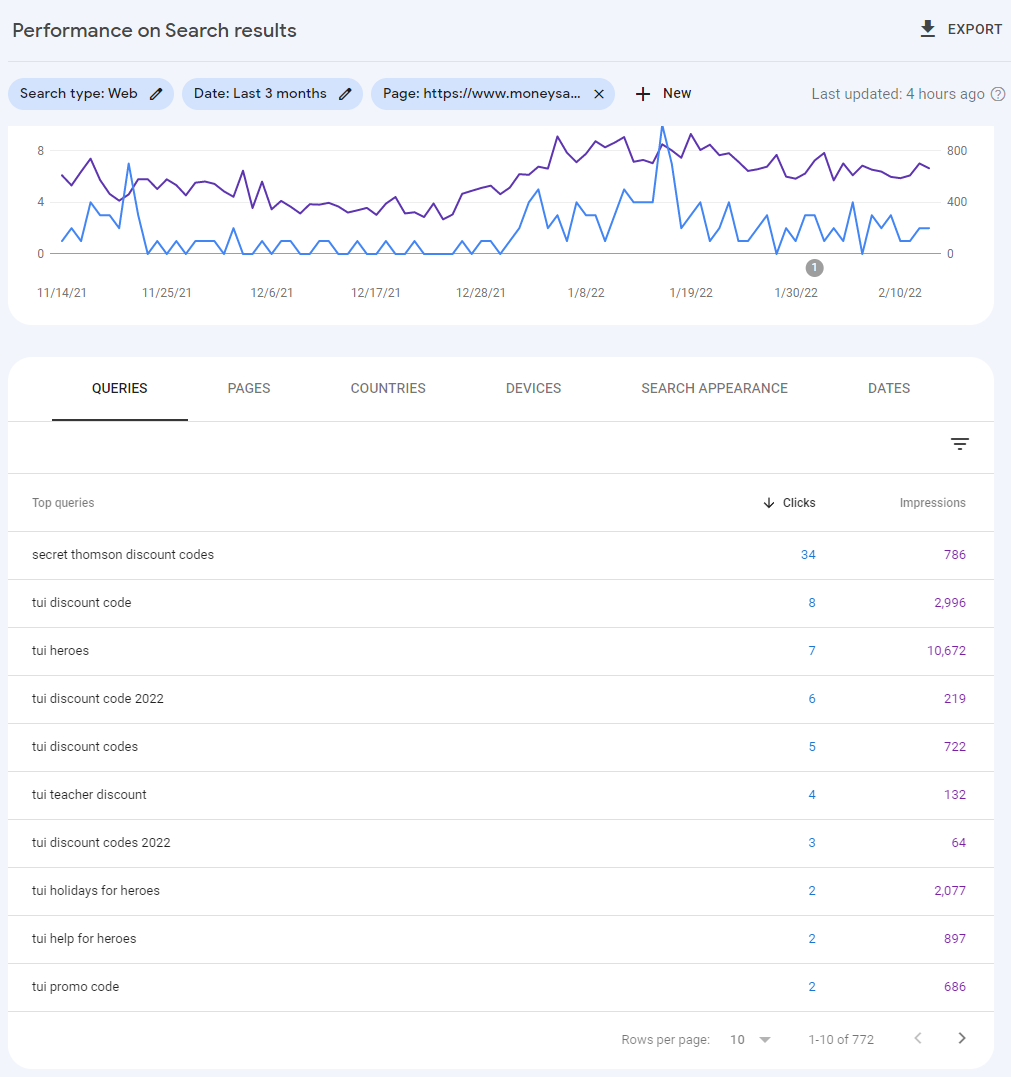
You only get 10 rows of data displayed to start with, so use the drop down and select the maximum available through Google Search Console, which is 1,000 split across 2 pages.
You can start looking through the queries and see whether any give ideas for new content sections.
If you sort the data by impression, you’ll see the queries with the largest opportunities, but also probably the most difficult to rank for.
6, Filter for questions
Question based queries are always useful for content optimization. They useful for the following reasons:
- Use for FAQ sections
- Usually long tail and less competitive
With the addition of regex support in Search Console the filtering you can do on queries has become much useful.
Simply set the query filter type to be ‘Custom (regex)’ and then enter in:
what|where|how|why
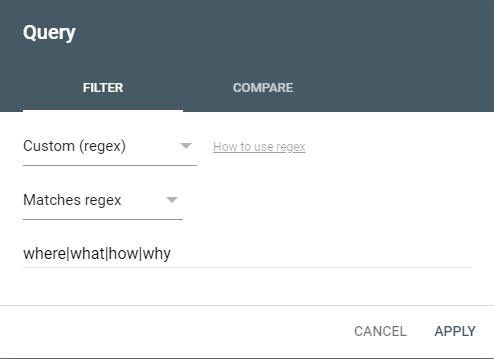
You can extend the list of question-type words as much as you want by adding a pipe character in between each one.
How to discover which queries are not used in your article
Going through each query and doing a ctrl+f to see if it exists on a page would be a painful task!
We’ve put together a Google Sheet that you can use to analyze the text on your article’s page, paste the queries in the page is ranking for, and count the number of times each one is used on the page.
This will give you a way to see which queries aren’t used and offer the opportunity to include them either within existing text or by writing new sections.
IMPORTANT : Please make sure that you make a copy of this spreadsheet.
Within Google Sheets go File -> Make a copy.
Permission will not be granted to edit the master copy.
Here’s the link to the Google Sheet:
https://docs.google.com/spreadsheets/d/1_4E2CE5kQ5a4lLWd4c25rP_avuE4Iib63TojdNCZTKw/
Here’s a video on how to use the Google Sheet:
How to do this in SEOTesting.com
While the Google Sheet above will help you, it is still a time-consuming process to export the data and set up the filters in the way you want.
SEOTesting.com has two ways for you to easily see which ranking queries are not currently in use on your page
1, Page Details view
Wherever you see a URL in SEOTesting (generally in reports) you can click on it and be taken to the Page Details view for it.
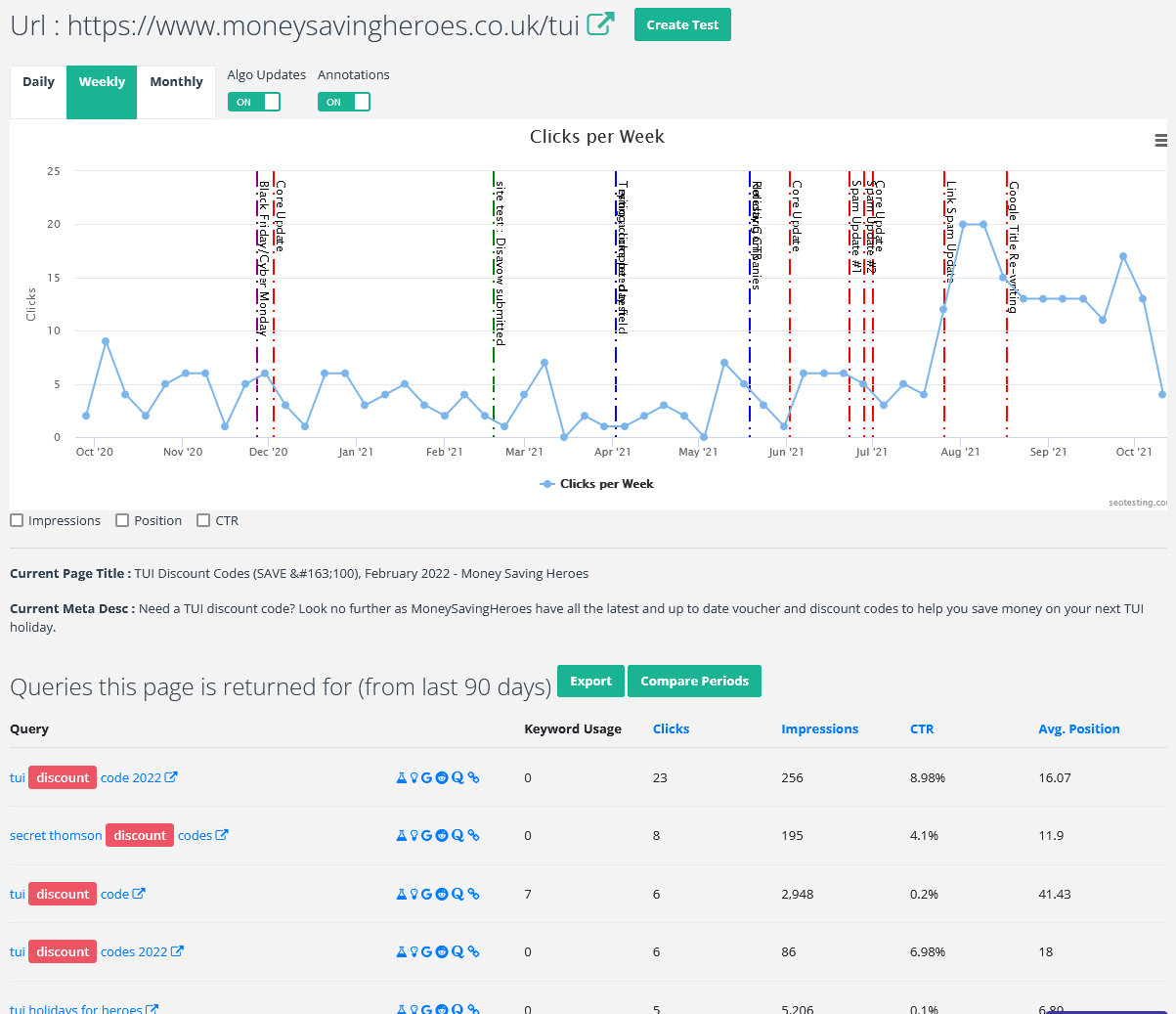
As well as showing the performance graph data from Google Search Console, it also shows the queries the page ranks for and whether they are used on the page.
2, SEOTesting.com Google Chrome extension
With the SEOTesting.com Google Chrome extension installed, whenever you view a page of a site you have added to SEOTesting, you can see within the extension the queries the page is ranking for and whether they are used on the page.
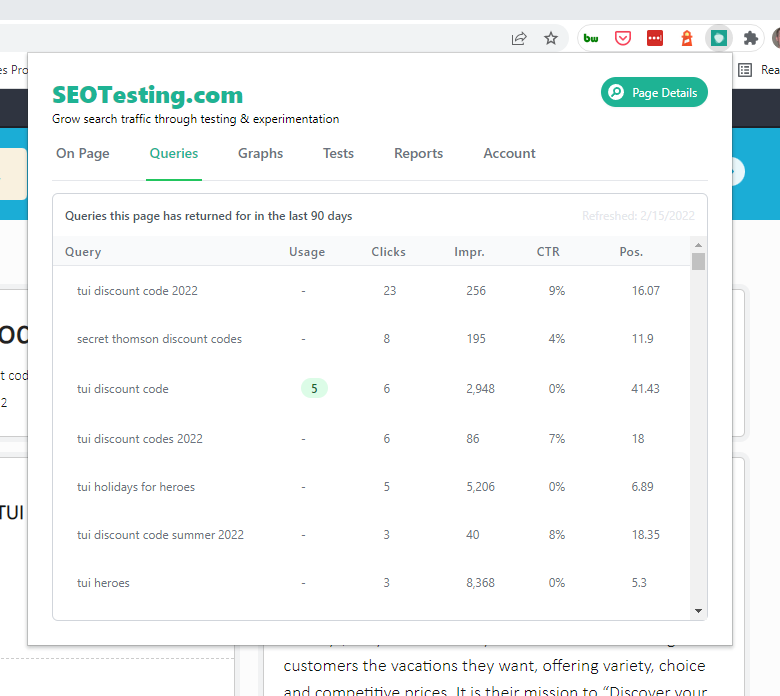
SEOTesting has a free 14-day trial, so you can check out both the Page Details view and the Chrome extension.

